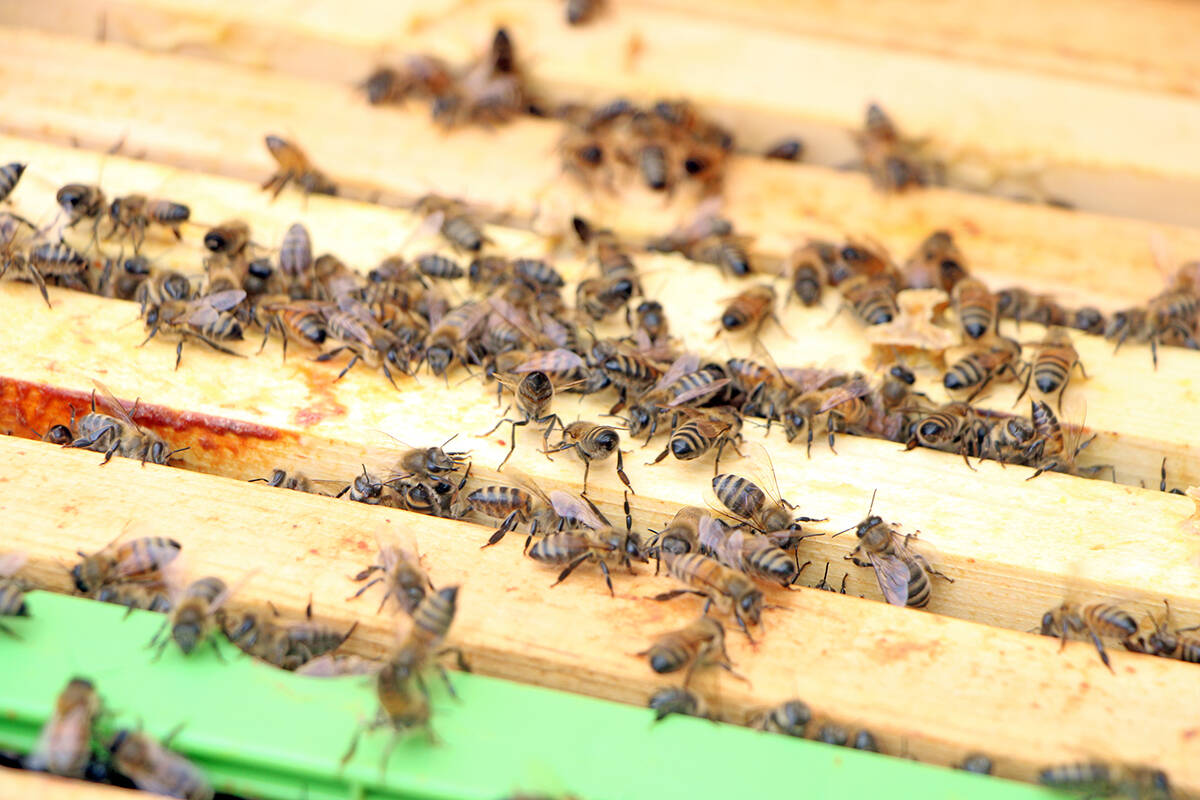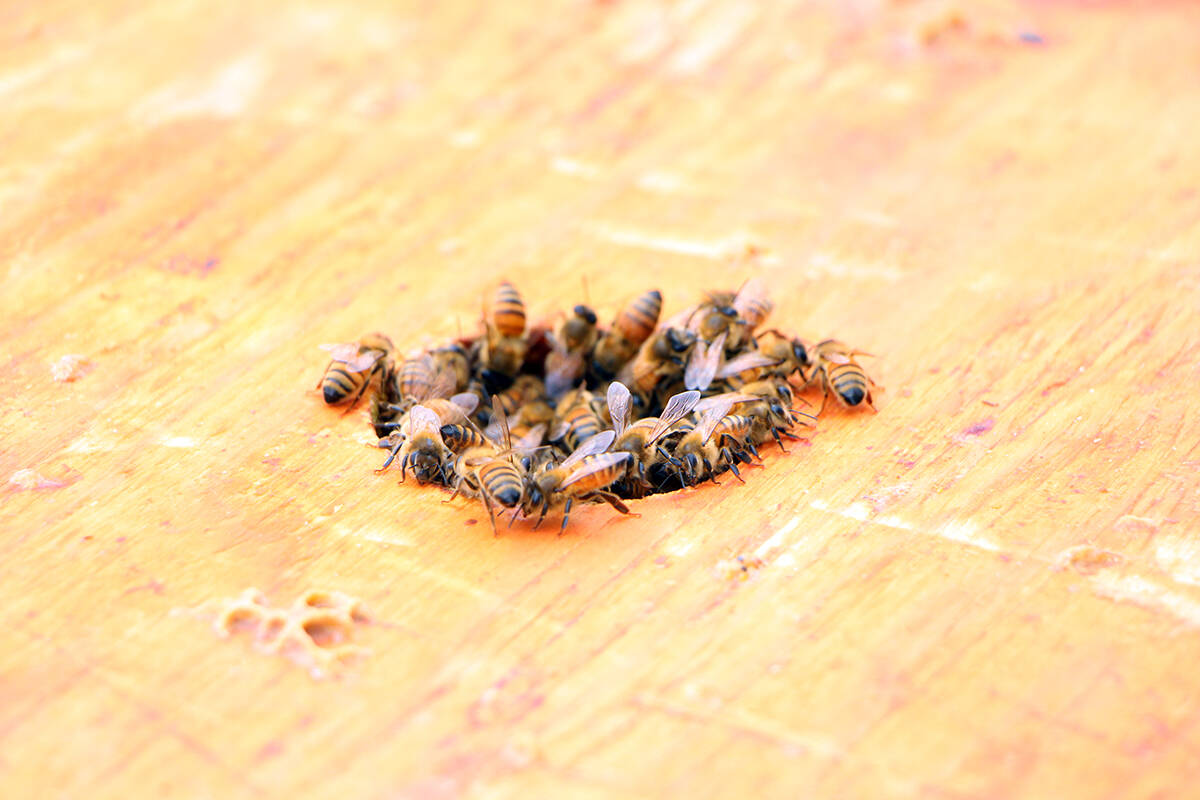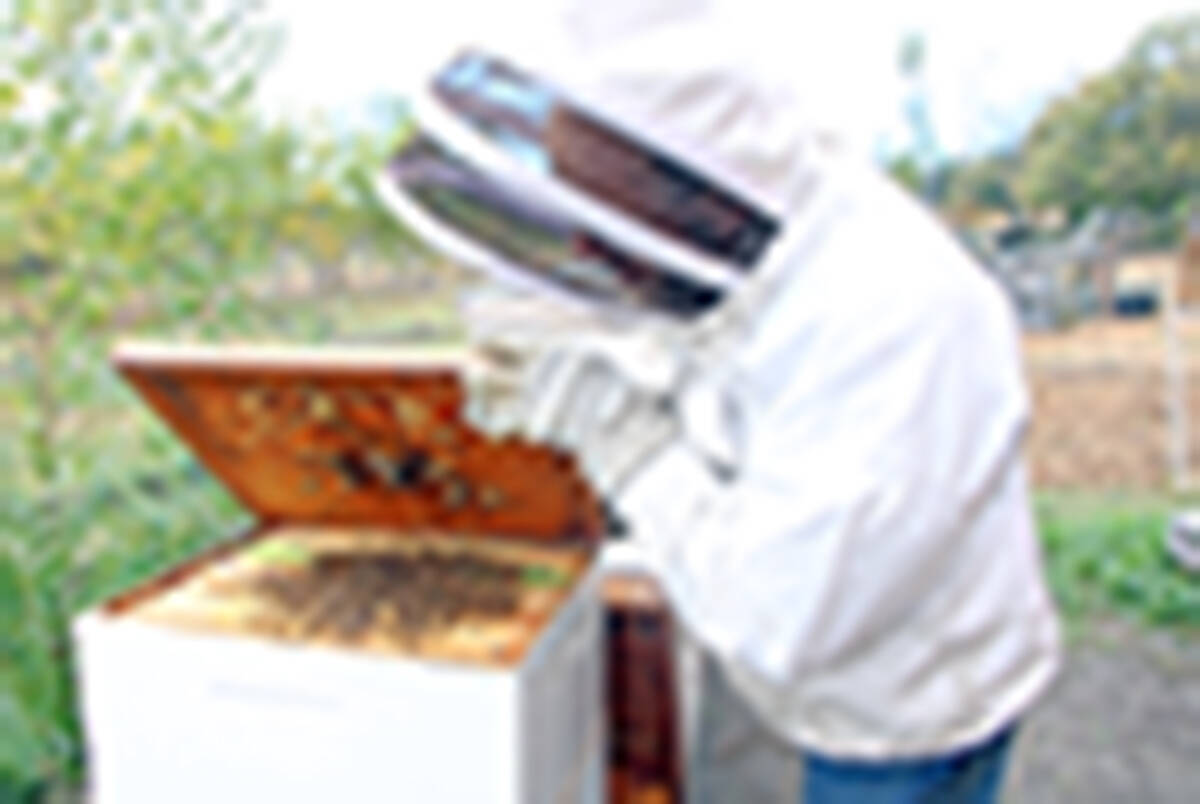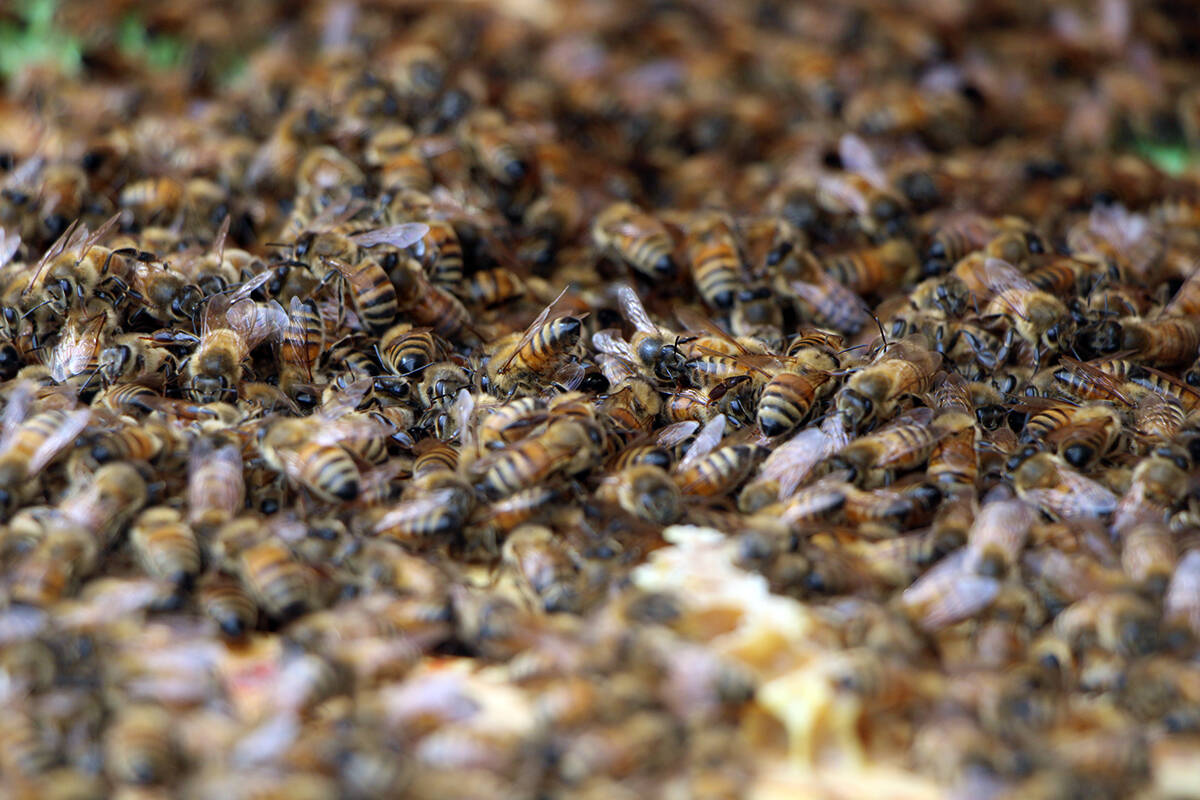In Dan Dobson’s apiary, the bees are getting ready for winter.
The 100 Mile House beekeeper is on hand to help. He’s installed entrance reducers to keep out the hornets and wasps, has checked and treated the bees for mites and is feeding the bees sugar water to supplement their stores. Eventually, he will wrap the hives in insulation to keep them warm so the bees don’t have to work as hard or eat as much during the cold Cariboo winters.
“Once they go to bed it’s sort of like ‘good luck guys, hope to see you in May or March!’ It’s crazy because three years ago we got a dozen hives through the winter and then did exactly the same thing the following year and lost every single hive,” Dobson said. “We have no idea why.”
Being a beekeeper is not an easy task, even with just a single hive, Dobson said. Bees don’t hibernate during the winter but cluster around the queen and her brood, shivering to keep the hive warm at temperatures up to 36 C, from late fall to early spring. During the winter, Dobson can’t open the hives to check on his bees to see if they have gotten sick or become infested with mites.
That’s why it’s crucial to ensure the bees are well fed and are mite-free before the first frost arrives. So far, Dobson said, he has never had a hive starve and he intends to keep it that way. The work keeps him on his toes, as there are so many variables that can make or break a hive.
The heat dome and wildfires this summer, for instance, had an effect on the honey harvest, as the hot and dry conditions were not good for the flowers the bees need. John Hoyrup, president of the Central Cariboo Beekeepers Association, said he experienced the lowest honey harvest in 30 years at his property in 150 Mile
“We didn’t have any big fires around here, that was down in 100 Mile’s neck of the woods, but during 2017 you could see a significant drop in production because of the smoke,” Hoyrup said. “We use smoke to calm the bees down when we go into the hive and of course the smoke in the air blocks the sun so the flowers don’t produce quite as well.
Dobson, who has 12 hives - five of them near 100 Mile and the other seven in Lac La Hache - said he doesn’t believe the smoke had an effect on his bees this year. The majority of his honey came from his 100 Mile property while his Lac La Hache hives underperformed. When it comes to extracting honey, each of his hives weighs 85 pounds and can produce up to 60 pounds of honey.
Dobson plans to transport his Lac La Hache hives back to his farm after Thanksgiving.
“The thing with beekeeping is that every apiary is different. My backyard is different than my neighbour’s backyard and the flowers that my bees collect nectar from is different than somebody else’s,” Dobson said. “We moved our hives to Lac La Hache because we wanted to drop a little bit lower in elevation. We also ended up putting them right beside a big alfalfa field so we thought we’d get the benefit from the alfalfa in the summertime.”
Despite the challenges, more people are getting into beekeeping in the Cariboo, which Hoyrup attributes partly to the pandemic. About 75 members from the club ordered 140 new nucleus hives this year. While the club hasn’t been able to meet, he said he’s done his best to give them advice.
To Dobson, who sells his excess honey under the name Sticky Fingers Honey, his bees are like family. In fact, he’s even named his queens and among his hives, you can find Peggy, Rhonda and Irene.
“We started beekeeping, I guess, just because of interest. They’re not something a lot of people deal with so it’d be like if you were raising ostriches,” Dobson said. “You learn a whole new skill set.”
